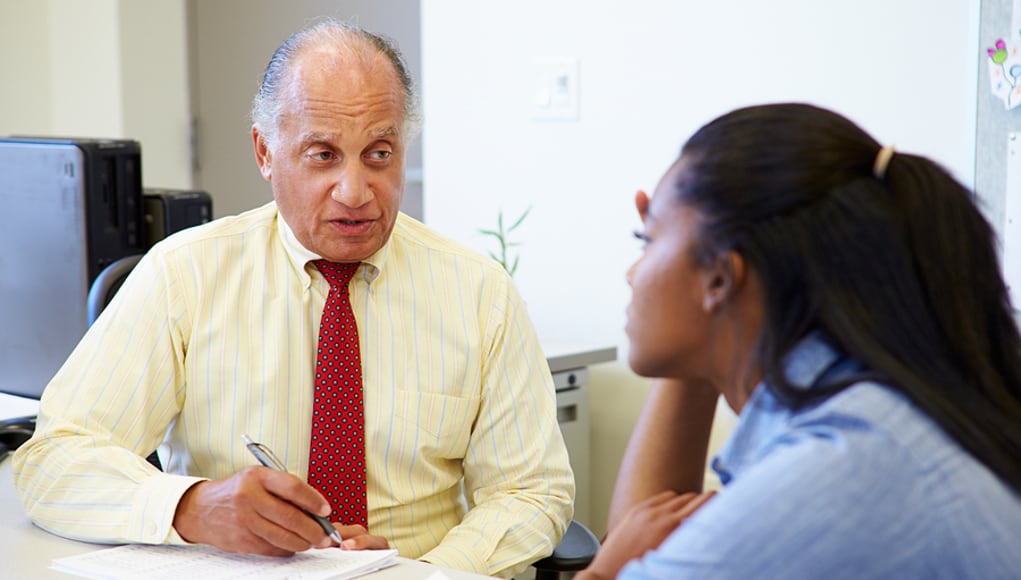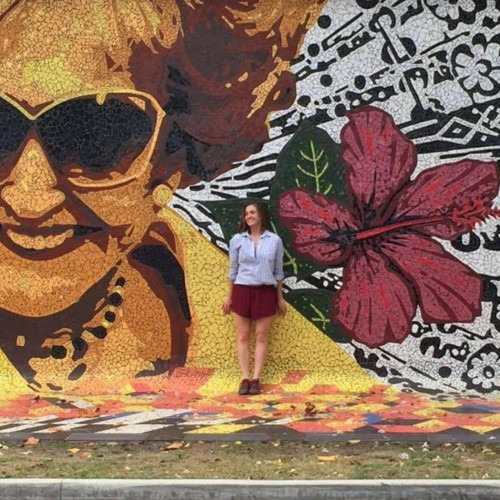Implementing Restorative Practices In The Classroom

Suspensions do not improve a school’s environment, according to the Dignity in Schools campaign that identified my school district as having the fifth highest suspension rate in the state of Pennsylvania. In 2013, when this report was compiled, our district had assigned an out-of-school suspension for 58 of every 100 students. Yes, that is a lot.
The challenge was that this consequence didn’t appear to be decreasing the unwanted behavior. Instead, it was leading to greater disciplinary issues and far lower success rates of its students.
They call this School Push-Out. As the phrase may suggest, history shows that suspension and expulsion of students does more harm than good, pushing students out of the school system and leading to a greater level of dropout and harmful learning environments.
In order to combat this all too popular consequence to adverse behavior, for the 2015-2016 school year, my school became one of many in the district to implement a new form of school discipline called Restorative Practices.
What Is The Restorative Practices Approach?
Aiming to decrease School Push-Out and create a more positive school culture, the Restorative Practices (RP) approach uses various communicative techniques focused on affective statements and proactive community building activities.
Putting into considering what the protocol has identified as the Nine Affects, facilitators (e.g., teachers, administrators, other school personnel) work deliberately to more deeply understand what moves their students to and from each affect which range from joy as the most positive, to rage as the most negative.
Reminiscent to the ideas shared in a recent podcast between Getting Smart and Roger Weissberg of CASEL, Restorative Practices complements the social-emotional movement–educating the whole child through strategies to build productive mindsets, supportive cultures and character development. More specifically, RP uses questioning in hopes of inducing empathy, self-reflection and accountability.
There is little to argue against the positive relationship building that RP brings to the classroom and a school culture. It’s protocol for handling conflict, however, is where the challenges arise. Instead of the student simply being punished for breaking a rule, it is hoped that through the right questioning, the deeper impact of a behavior will be understood, thus decreasing that behavior in the future.
The overall goal of RP being to bring those who caused harmed in a scenario together with those who have been harmed, directly or indirectly. Sounds great, right? But how do we actually implement this in the classroom?
Restorative Practices In Action
It comes as no surprise that as a teacher of secondary education, I see my fair share of emotional outbursts. While the most natural response to loud remarks, defiant behavior and continuous class interruptions would be to send a student out of the room, my training in RP has provided me a whole new way of approaching conflict.
The expectation of RP is as follows: A conflict occurs in the classroom, instead of removing the student temporarily by sending him or her to in-school suspension or to an administrator, a teacher privately engages the student in a restorative conversation.
The exchange always begins in the same way:
- “So, what happened in there?”
- “How do you feel about what happened?”
- “How do you think that outburst affected those around you?” etc.
If the conflict in class involved more than one student, these questions would be used in a small impromptu conference with those involved. Ideally, this conversation would lead to the root cause of the disruption. Perhaps one student felt threatened or misunderstood by another. Or frustration over a difficult concept in class lead to aggression towards the teacher, etc.
Ultimately, the issue would be resolved on the spot. Alternatively, while sending the student out for disrupting the learning environment may provide a solution in the moment, the more sustainable route, as suggested by RP, is to seek understanding and bring resolution to a problem that may otherwise be exacerbated in the future if left unaddressed.
However, this procedure should not be a spontaneous reaction, but a result of regularly incorporated restorative conversations that have already established that line of communication. For those of you who think this may add value to your classroom, consider taking the small steps below.
1. Introducing class-wide circles on a regular basis. These can either be content specific (in my case having all students ask and answer the same question in Spanish) or general community building circles (questions like, “Where do you see yourself in ten years?”)
2. Respond to conflict with a conversation: Ask a student to recount what happened, discussing their emotions and rationale, eventually landing on a mutual plan of action for making the situation right again.
3. Incorporate entire class when determining potential consequences and next steps for adverse behavior: Bringing student voice into the decision making process may result in a greater understanding of how actions affect the classroom as a whole. Keep in mind, facilitation of these circles is a bit tricky. Avoid shaming or singling out just one student and aim to give everyone in a class the opportunity to consider what they can improve on individually.
4. Model the compassionate and empathetic qualities you hope to build: If that one on one contact happens often in times of peace, perhaps it won’t be quite as difficult in times of conflict.
The Challenges And Unknowns Of Restorative Practices
With less than two years into establishing RP in our school district, the true effects of this protocol remain unclear. Suspension rates have significantly decreased, but are our students actually developing a greater ability to emotionally connect? Will this reduce the number of young people pushed into the criminal justice system? And more importantly, is this response to conflict resolution entirely feasible on a regular basis?
An even more immediate challenge is how to move forward in situations where this approach does not resolve an issue. During countless scenarios in my personal experience, once engaged in a restorative conversation, many students continue to defend their actions (at times loudly and aggressively). The result always being removal from my classroom.
In these cases, what should be the next step? Despite months of relationship building, including class-wide conversation circles and one-on-one impromptu conferencing, many students still resist any deeper connection.
The result is often an unresolved issue and the loss of precious class time. Possibly the most troubling result of scenarios such as these is the possibility that the other students internalize the actions of the defiant student, recognizing that disrespecting their teacher is not a punishable offense.
I ponder this implicit message each time a student is allowed to re-enter a room without clear consequence outside of a conversation. Especially what long-term implications that message may have for the future of a student. School should be a place to learn real world consequences to behavior, right?
The next steps I have taken to resolve an issue have included those mentioned below. Unfortunately, each took up very valuable time, either directly from the classroom and other students, or from my own time to plan or to direct energy elsewhere to better my teaching practice.
- A class-wide circle, in which each student had an opportunity to express how the conflict affected them, eventually resulting a class-wide solution.
- A conference with the administration and parent to resolve the issue.
- A behavioral contract in which the student and I collaborated on a solution, giving the student ownership of future consequences to his behavior.
RP has brought a whole new procedure to very common issues in the classroom and has established a whole new culture for communication in my school. However, the long-term costs and benefits still remain a bit unclear to me. Tell me what you think about RP in the comments below, or tag me in a tweet on Twitter.
For more, see:
- Student Engagement’s Three Variables: Emotion, Behavior, Cognition
- 3 Ways to Connect to Students with Emotional Challenges
- 3 Ways to Build and Implement Successful Classroom Relationships
Stay in-the-know with all things EdTech and innovations in learning by signing up to receive the weekly Smart Update.






Olivia Rauch
This program is going after a large problem with the way rewards and punishments are built into schools! An issue with suspension is that it could be construed as a reward for negative behavior as it removes the student from an environment they don't like. Unfortunately, since this reward of being away from school is targeted as the direct consequence of a problematic behavior, it can reinforce the very actions it was intended to stop. This could be especially troublesome if done frequently enough that kids can count on this consequence. This is one theory on why suspension isn't always effective, so it's great that your school is trying something different to combat the problem! Perhaps one of the strengths of the restorative practice approach is that the consequence of negative behavior is no longer a possible reward of avoidance of the issue? Rather, the consequence is remaining at school and putting in work to resolve the issue. Maybe because the students have to stay and engage in their conflicts, they are not only learning how to talk through issues with their teacher and one another, but also learning to avoid some conflict because there isn't the reward of leaving school.
Replies
Emily
Thanks for the insightful reflection, Olivia. And absolutely! You see it all the time, especially during challenging activities in class. Those students will do anything to get removed from the classroom environment. With that, restorative practices have completely refigured what students know they can and can not do to be "Kicked out", however, the symptom to that that students also know there isn't necessarily a consequence to the behavior. If they still want to be sent out, they will refuse to engage in the restorative conversation, and those that just want to let some steam off on their teacher or classmates, will nod and agree during any conversation to be welcomed back into the class even after some pretty unacceptable behavior. It's a tricky balance to strike, since the limited consequences have certainly been noticed my our student population. I guess time will tell, what true mark is being made.
Annie O'Shaughnessy
Thank you for this article Emily. You give voice to many educator's questions and concerns about RP in the classroom. I maintain that the nuances of the restorative approach have more to do with our own inner world and the understanding we have of why kids are disruptive and combative in the first place. This is why so many schools are including trauma informed teaching courses in with their RP training and why I embed mindfulness into my RP trainings. We need to be having these conversations more so thank you so much for taking the time to write this.
Replies
Emily Riley
Thank you so much for positive response Annie. It is interesting, starting a new school year just a few months ago, RP has been at the forefront of our conversations yet again. Discipline in my school has been especially challenging this year, thus far so questions and concerns have been plenty.
Jesse VanBuskirk
After reading around twenty or so articles all I see is all students loose instruction time instead of just one or two. Then after all is said and done the offendibg students recieved no consequences for their actions and seem more likely to repeat and maybe go further with their actions.
Todd
A well thought out and balanced account of what I have also experienced with RP Emily! Unfortunately, the lack of consequences in our school has lead to a downfall in student behaviour. We were, or still are really, lucky that we have great students who are generally well behaved. What we are now experiencing is an increasing amount of students who are becoming more and more disrespectful as they are seeing that there is no result except for a conversation. It is these same students who consistently refuse to engage in conversation or tell you what you want to hear at the time, only to repeat the same behaviours. We are particularly experiencing this with our younger students who seem to lack the maturity to deal with this approach. I totally agree with the theory of RP and have seen it work with some students, especially those a little older and more mature, but am struggling with the noticeable decrease in respect for teaching staff and the lack of accountability for those students behaviours. Our administration simply puts across that we are not doing our jobs well enough in the classroom and ask us to be more accountable as staff. It is very frustrating!
Replies
Tracie
We're having the same issues at my school. Administration will spend 45 minutes talking to students! Consequences only come about after the teacher is exhausted and utterly frustrated with a student's behavior. I agree with the premise, but admin needs to get on board with backing teachers up.
Rene
This was very informative Emily. Thank you. I do have a couple of questions on implementation. Is RP being implemented in all classes or just yours? If it is just yours, do you think you would likely see even more success if implementation was seen in all their classes maybe even those prior to joining your class?
Replies
Emily Riley
Hi Rene! Thanks for the questions. Restorative Practices are now implemented over our entire district at both the elementary, middle, and high school levels. At the time this article was written, my building was one of many implementing first as part of the pilot implementation. School wide we received training and were all expected to carry out restorative actions prior to punitive consequences. We also began to implement community building circles school wide that our administrators looked for during observation. Despite school wide use of restorative practices, the many challenges I encounter have continued.
Sharon Darnell
We are midway through implementation of RP and I teach elementary school students. If you sit down and work out a consequence, but the behavior continues, then can you implement something punitive? Could community service be performed, such as, serving at the soup kitchen or sorting donations? How about something to benefit the school in some way?
Ellen
As a new teacher, I appreciate your honesty about these procedures very, very much.
There is a balance here somewhere...
Katherine Burton
Set up front what you are wanting your classroom to be and having the students give their response and how they would handle a problem. Don't rush through classroom expectations so fast. Get input from your students then the next day, have them write a rule they would like and what would the punishment for that rule for breaking it. The class that did this has more respect in his classes than the classes that just rushed through the expectation of the classes.
Kareen Macaraig
Thank you for the opportunity! It's very informative and I learned a lot! More power!
Laurie Teal
I like the effect of the classroom circle ,to talk things out and to respond to conflict with conversation.
Diana Ketterman
Thank you so much for your article. As a school psy of 38 years, I agree that it is a combination approach that is needed to influence student behavior (restorative practices and logical consequences). I tried to teach mindfulness at Inglewood High and the temperament of the students was not responsive at the time. I only had them for an hour a week and I was a visiting presenter. I did find that there was a correlation between the temperament of the student and their response to this type of calming process. A teacher needs outside support to make this really work at its best. I do believe a team approach with the teacher and support staff is what is needed even though it is not always feasible due to limited staff availability. The high support, high accountability approach is good but its also needs a high learning part and restitution for harmful behaviors. That's my 2 cents.
Nicole Healy
I remember as a kid getting into trouble and getting to spend the day with my dad at work. Not very much of a punishment. So I was doing more and more inappropriate things. Eventually my mom caught on and the punishment changed. The same thing is happening with children. I saw at my own school that a child kept asking for OSS. Eventually he was told that was not what he was getting. The child knew that if he was to get OSS he wouldn't have to come to school and he would be able to stay at home and be able to do whatever he wanted. This was not correcting the inappropriate behavior it was making them worse. I agree with having that child stay in school, any child for that matter. Talking about an issue with the whole classroom is a great idea. I love having the children talk about a behavior as a while and then coming up with a solution as a whole. This creates a sense of community in the classroom.
Sheralda Montileaux
Thank you for the information I learned a lot, I believe all schools should practice R P it is a positive change for Teachers, students, and the community. we can all work together as a team and make a positive and powerful change.
Betty A. Robertson
The RP model is very interesting for teachers and students because of the following areas; willingness to face problems, fears and persistence to move step by step toward resolving problems and conflicts in a positive manner.
RP also gives turning problems into opportunities, improving, learn new skills for improving communications and resolve conflicts to avoid getting kicked out of school.
Need RP training before implementing the model!
Betty A. Robertson
RP is is very informative for implementing a new program for the school, community, parents and students!
Ruth Ann Ridgeway
I was in a school that tried to implement Restorative Justice in the classroom. Every day at a certain time all the classes were to have a circle time and discuss how our classes were doing and what needed to be done differently.
Ruth Ann Ridgeway
It'll be interesting to see the school change.
Ruth Ann Ridgeway
We all have to start thinking non combative.
Jackie Eagle Heart
RJ in schools will teach all involved with students education a plus, for drop out and students who are always labeled as a bad child.
Jackie Eagle Heart
RP is a plus in all schools for students who are labeled as the bad child but through this program we can have resources to help us in the classroom.
Roy Burton
Amazing article restorative practice is so helpful to groom the students mindset and intellect. In restorative training they learn how to react and respond in different situations.
I am also a professional restorative trainer we train school teachers. Check out our website: - https://www.srpctraining.org/